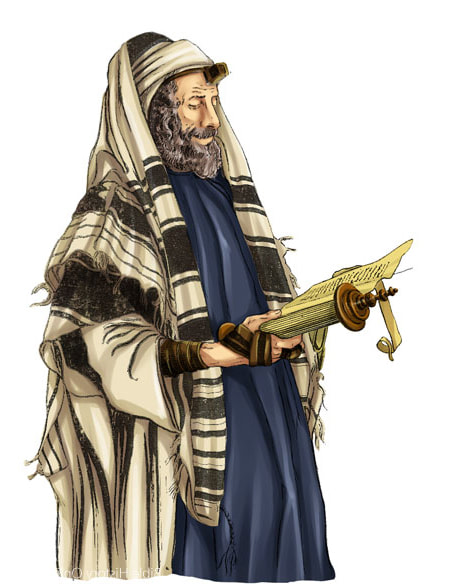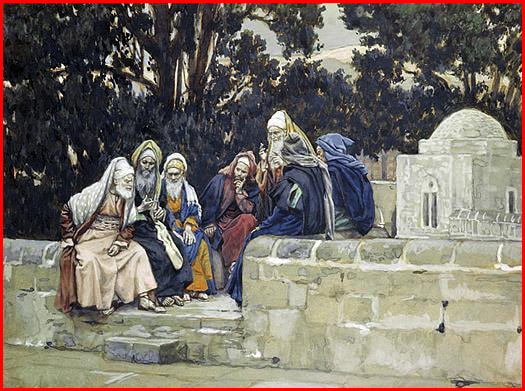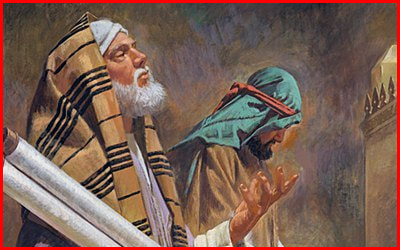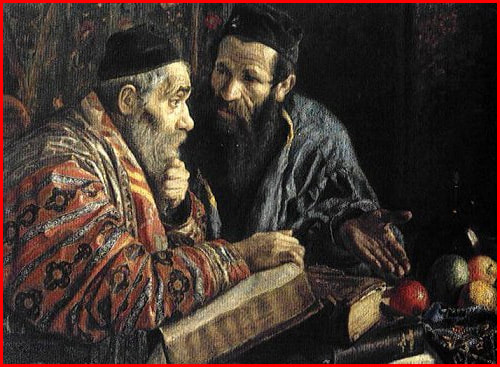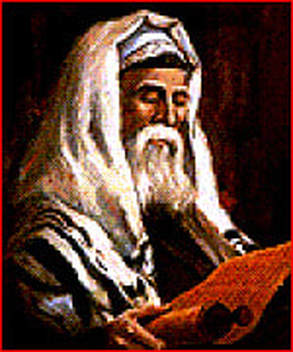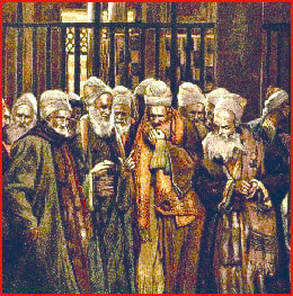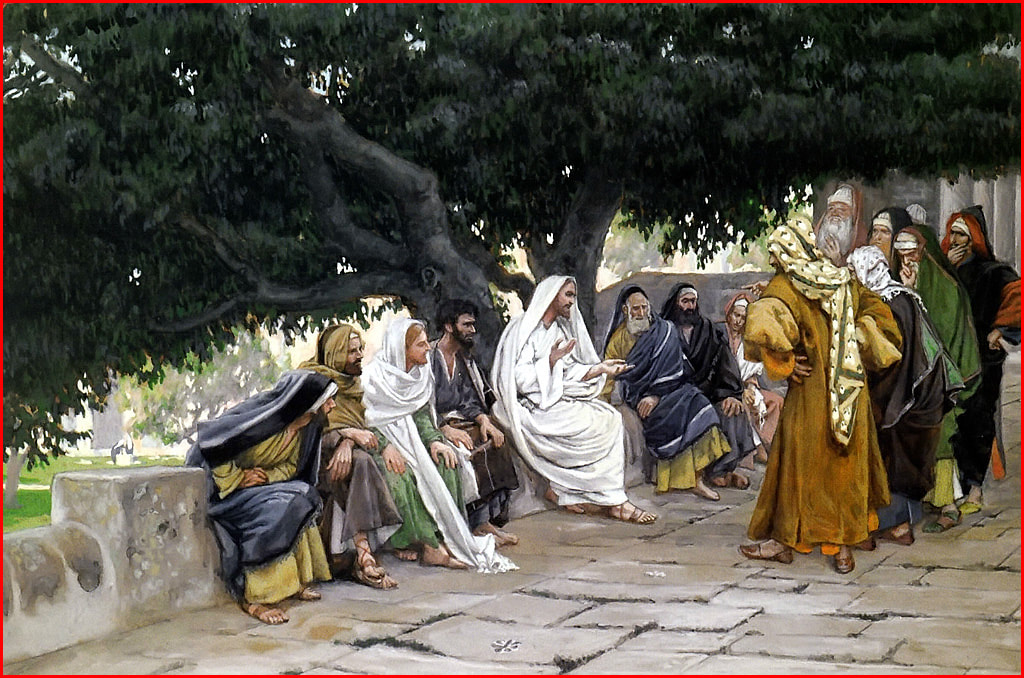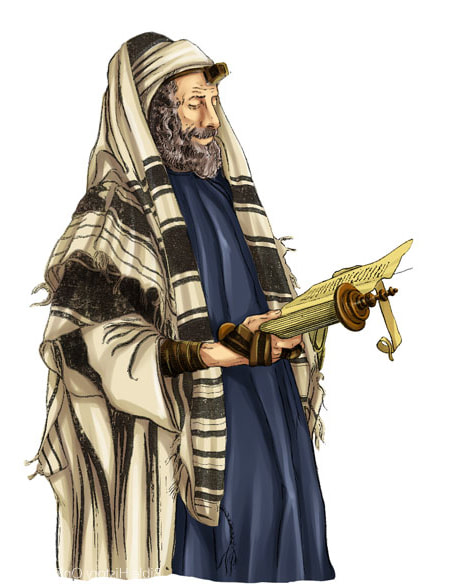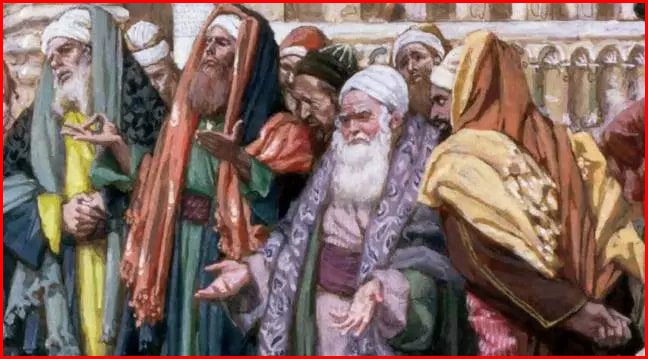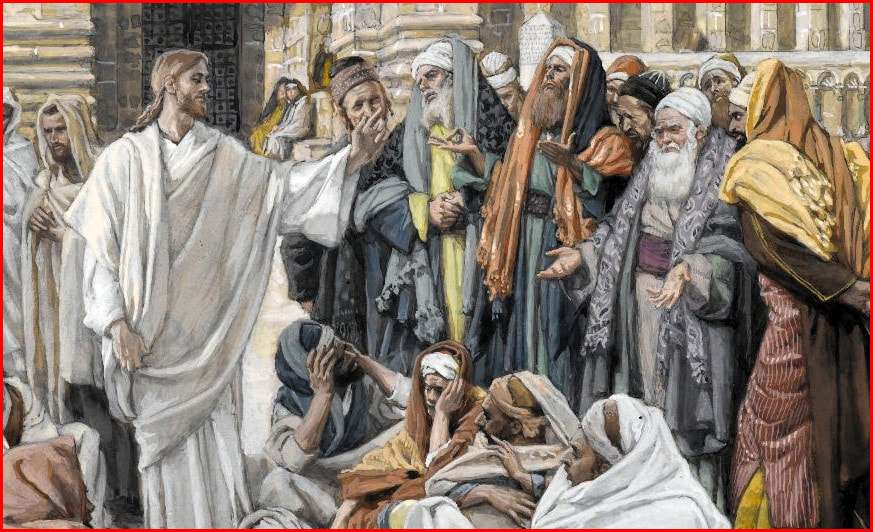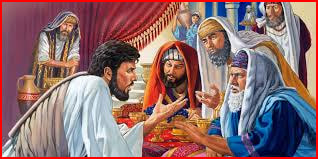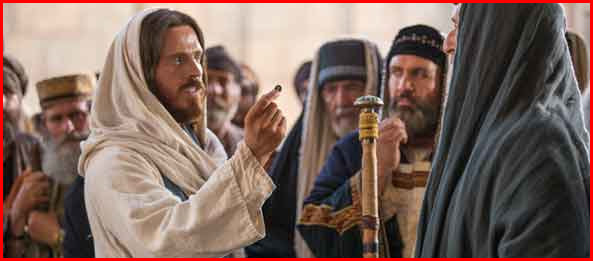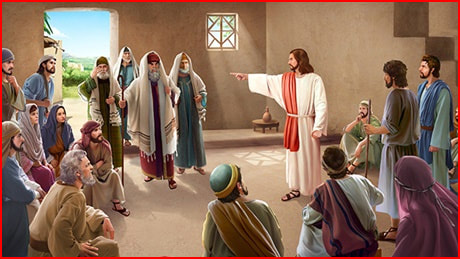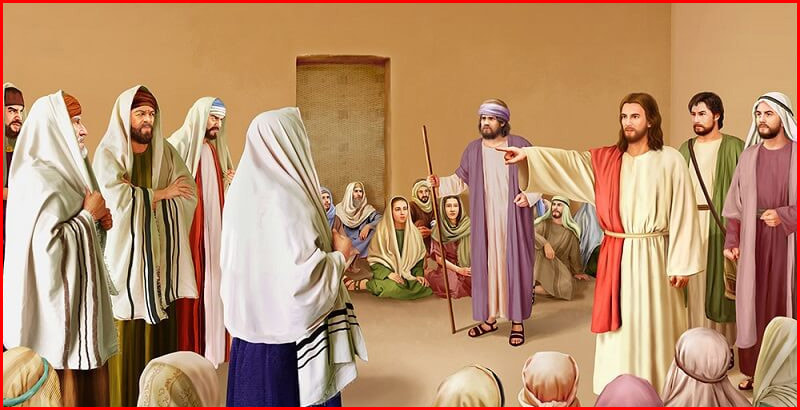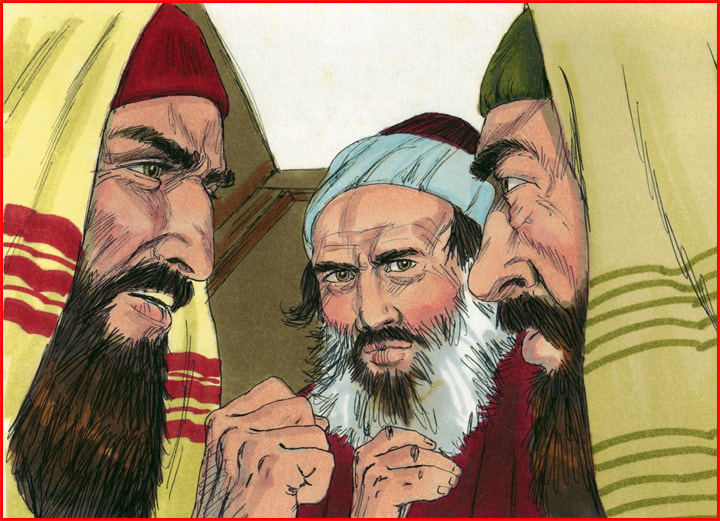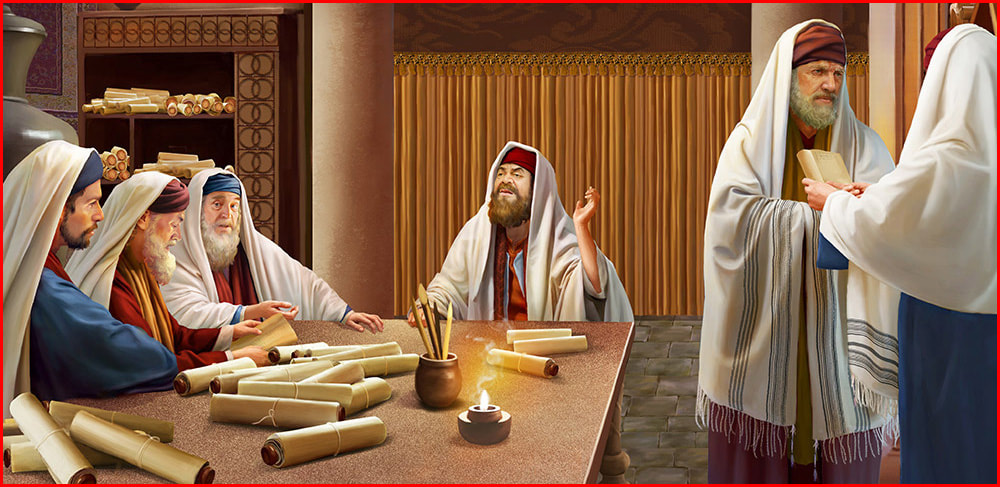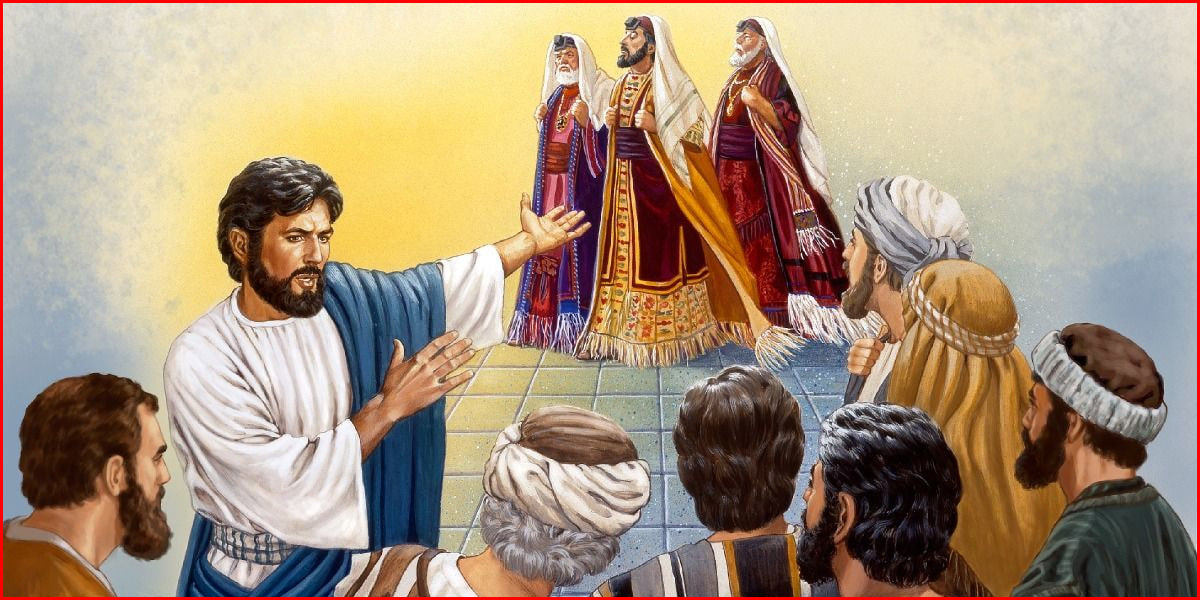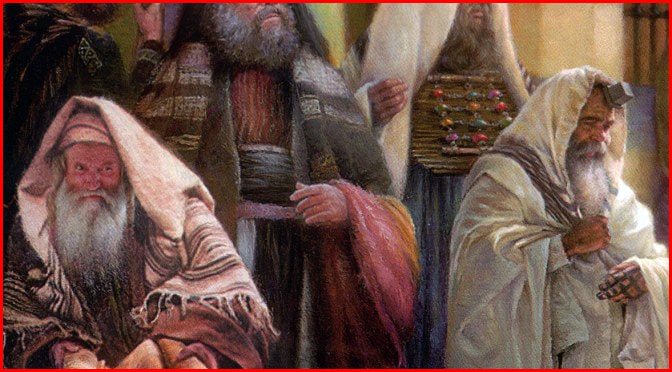| Devotion to Our Lady |
|
- Homepage
-
Daily Thoughts
- 2023 October Daily Thoughts
- Daily Thoughts Lent 2020
- Daily Thoughts for Advent 2019
- Daily Thoughts for October 2019
- Daily Thoughts for September 2019
- Daily Thoughts for August 2019
- Daily Thoughts for July
- Daily Thoughts for June
- Daily Thoughts for Easter 2019
- Daily Thoughts for Lent 2019
- Daily Thoughts for Christmas
- Daily Thoughts Easter 2022
- Sacred Heart
- Holy Ghost
-
Spiritual Life
- Holy Mass Explained
- First Friday Devotions
- First Saturday Devotions
- The Mercy of God
- Vocations
- The Path Everyone Must Walk >
- Gift of Failure
- Halloween or Hell-O-Ween?
- Ignatian Spiritual Exercises >
- Meditation is Soul-Saving
- Spiritual Communion
- Miraculous Medal
- Enrollment in Miraculous Medal
- St. Benedict Medal
- Holy Water
- Advice on Prayer
- Your Daily Mary
-
Prayers
- September Devotions
- Seven Sorrows of Our Lady
-
Novenas
>
- NV-Help of Christians
- NV-Nativity of Our Lady
- NV-Seven Sorrows
- NV- Sorrowful Heart
- NV-Pope St Pius X
- NV-La Salette
- NV-St Michael Archangel
- NV-Immaculate Heart
- NV-Assumption
- NV-Novena for Fathers
- NV-Novena for Your Mother
- NV-St Raphael Archangel
- NV-Souls in Purgatory
- NV-All Saints Day
- NV-Christ the King
- NV-Divine Motherhood
- NV-Guardian Angels
- NV-Rosary
- NV-Mirac Med
- NV- Imm Conc
- NV - Guadalupe
- NV - Nativity of Jesus
- NV-Epiphany
- NV-OL Good Success
- NV-Lourdes
- NV-St Patrick
- NV-St Joseph
- NV-Annunciation
- NV-St Louis de Montfort
- NV-OL Good Counsel
- NV-Last Supper
- NV-Passion
- NV-Pentecost
- NV-Ascension
- NV-Sacred Heart
- NV-Sacred Heart & Perpetual Help
- NV-Corpus Christi
- NV-OL of Perpetual Help
- NV-Queenship BVM
- NV-OL of Mount Carmel
- NV-St Mary Magdalen
- NV- Im Hrt
- August Devotions to IHM
- Immaculate Heart of Mary
- Litany of Dependence
- Prayers to St Mary Magdalen
- Prayers in Times of Sickness Disease & Danger
- Holy Souls in Purgatory
- Meditations on the Litany of Our Lady
- Special Feast Days
- Prayers to Mary (Mon-Sun)
- Litanies to Our Lady >
- Various & Special Needs
- Our Lady of the Rosary
- Our Lady of Mt. Carmel
- Our Lady of Perpetual Help
- Our Lady of Guadalupe
- Other titles of Our Lady
-
Rosary
- Downloads
- Consecration
- Easter Season
-
Holy Week
- Last Seven Words of Jesus >
- Characters of Passion >
- The Last Days of Christ
- Before Palm Sunday
- Palm Sunday
- Monday in Holy Week
- Tuesday in Holy Week
- Wednesday in Holy Week
- Holy Thursday (Last Supper)
- Holy Thursday (Agony & Arrest)
- Night Vigil with Christ
- Good Friday (Pilate & Herod)
- Good Friday (Way of Cross & Crucifixion)
- Saturday in Holy Week
-
Lent
- Ideas for Lent
- Daily Lenten Planner
- Daily Lenten Liturgy
- From Cold to Hot
- Lent with Aquinas
- Lent with Dom Gueranger
- Virtues for Lent
- History of Penance
- How Expensive is Sin?
- Confession of Sins
- Letter to Friends of the Cross
- Sermons for Lent
- Stations of the Cross >
- Lenten Prayers
- 7 Penitential Psalms
- Lenten Psalms SUN
- Lenten Psalms MON
- Lenten Psalms TUE
- Lenten Psalms WED
- Lenten Psalms THU
- Lenten Psalms FRI
- Lenten Psalms SAT
- Lenten Laughs
- Septuagesima
-
Christmas
- Epiphany Explained
- Suggestions for Christmas
- Food For Thought
- Christmas with Aquinas
- Christmas with Dom Gueranger
- Christmas Prayers
- Candles & Candlemas
- Christmas Sermons
- Christmas Prayers SUN
- Christmas Prayers MON
- Christmas Prayers TUE
- Christmas Prayers WED
- Christmas Prayers THU
- Christmas Prayers FRI
- Christmas Prayers SAT
- Twelve Days of Christmas >
-
Advent Journey
- Purgatory
- Christ the King
- Legion of Mary
- Scapular
-
Saints
-
Martyrs for the Faith
>
- Your Daily Martyr >
- All 365 Days of Martyrs
- Cristeros
- St Valentine & Valentine's Day
- Martyrs--Thomas Becket
- Martyrs--John the Apostle
- Holy Machabees
- Age of Martyrdom
- Carmelites of Compiegne
- Martyrs--Peter & Paul
- Martyrs--John the Baptist
- Martyrs--Andrew
- Martyrs--James the Great
- Martyrs--North American
- Martyrs--Seven Holy Sleepers
- Martyrs--Afra
- School of Martyrdom
- Martyrs--Christina
- Desert Saints >
- Saints for Sinners >
- Saints of Mary >
- History of All Saints Day
-
Martyrs for the Faith
>
- Precious Blood
- Synod 2023
-
Catechism
- Catechism Lesson 1
- Catechism Lesson 2
- Catechism Lesson 3
- Catechism Lesson 4
- Catechism Lesson 5
- Catechism Lesson 6
- Catechism Lesson 7
- Catechism Lesson 8
- Catechism Lesson 9
- Catechism Lesson 10
- Catechism Lesson 11
- Catechism Lesson 12
- Catechism Lesson 13
- Catechism Lesson 14
- Catechism Lesson 15
- Catechism Lesson 16
- Catechism Lesson 17
- Catechism Lesson 18
- Catechism Lesson 19
- Catechism Lesson 20
- Catechism Lesson 21
- Catechism Lesson 22
- Bible Study
-
Calendar
- Miracles
- Apparitions
- Shrines
- Prophecies
- Angels Homepage
- Hell
-
Church Crisis
- Conspiracy Theories
- Amazon Synod 2019 >
- Liberalism & Modernism
- Modernism--Encyclical Pascendi
- Modernism & Children
- Modernism--Documents
- The Francis Pages
- Church Enemies on Francis
- Francis Quotes
- Amoris Laetitia Critique
- Danger of Ignorance (Pius X)
- Restore all In Christ (Pius X)
- Catholic Action (Pius X)
- Another TITANIC Disaster?
- The "Errors of Russia"
- CRISIS PRAYERS
- Election Novena 2024
- The Anger Room
- War Zone
- Life of Mary
- Spiritual Gym
- Stupidity
- Coronavirus and Catholicism
- History & Facts
- Books
- Catholic Family
- Children
- Daily Quiz
-
Novena Church & Pope
- Day 01 Church-Pope Novena
- Day 02 Church-Pope Novena
- Day 03 Church-Pope Novena
- Day 04 Church-Pope Novena
- Day 05 Church-Pope Novena
- Day 06 Church-Pope Novena
- Day 07 Church-Pope Novena
- Day 08 Church-Pope Novena
- Day 09 Church-Pope Novena
- Day 10 Church-Pope Novena
- Day 11 Church-Pope Novena
- Day 12 Church-Pope Novena
- Day 13 Church-Pope Novena
- Day 14 Church-Pope Novena
- Day 15 Church-Pope Novena
- Day 16 Church-Pope Novena
- Day 17 Church-Pope Novena
- Day 18 Church-Pope Novena
- Day 19 Church-Pope Novena
- Day 20 Church-Pope Novena
- Day 21 Church-Pope Novena
- Day 22 Church-Pope Novena
- Day 23 Church-Pope Novena
- Day 24 Church-Pope Novena
- Day 25 Church-Pope Novena
- Day 26 Church-Pope Novena
- Day 27 Church-Pope Novena
- Day 28 Church-Pope Novena
- Day 29 Church-Pope Novena
- Day 30 Church-Pope Novena
- Day 31 Church-Pope Novena
- Day 32 Church-Pope Novena
- Day 33 Church-Pope Novena
- Day 34 Church-Pope Novena
- Day 35 Church-Pope Novena
- Day 36 Church-Pope Novena
- Day 37 Church-Pope Novena
- Day 38 Church-Pope Novena
- Day 39 Church-Pope Novena
- Day 40 Church-Pope Novena
- Day 41 Church-Pope Novena
- Day 42 Church-Pope Novena
- Day 43 Church-Pope Novena
- Day 44 Church-Pope Novena
- Day 45 Church-Pope Novena
- Day 46 Church-Pope Novena
- Day 47 Church-Pope Novena
- Day 48 Church-Pope Novena
- Day 49 Church-Pope Novena
- Day 50 Church-Pope Novena
- Day 51 Church-Pope Novena
- Day 52 Church-Pope Novena
- Day 53 Church-Pope Novena
- Day 54 Church-Pope Novena
- Penance Novena
- Daily WeAtheR Forecast
The Greatest and Most Important Week in the Church's Liturgical Year
CLICK ON ANY HOLY WEEK LINK BELOW
Also lots of LENTEN & HOLY WEEK DOWNLOADS on the downloads page (click here)
LITURGICAL PRAYERS FOR EACH DAY OF THE WEEK DURING LENT
| Sundays of Lent | Mondays of Lent | Tuesdays of Lent | Wednesdays of Lent | Thursdays of Lent | Fridays of Lent | Saturdays of Lent |
HOLY WEEK PAGES
| Daily Thoughts | Holy Week Main Page | Before Palm Sunday | Palm Sunday | Last Days of Christ |
| Holy Thursday Last Supper Novena | Good Friday Passion Novena |
| Monday of Holy Week | Tuesday of Holy Week | Wednesday of Holy Week | Holy Thursday (Last Supper) | Holy Thursday (Agony & Arrest) |
| Night Vigil With Christ | Good Friday (Pilate & Herod) | Good Friday (Way of Cross & Crucifixion) | Holy Saturday |
THE CHIEF CHARACTERS OF THE PASSION
| Characters of the Passion Mainpage | The Sanhedrin | Pharisees | Scribes | Saducees | Jewish Crowd | Roman Rulers |
| Judas | Annas & Caiphas | Pontius Pilate | Herod | Barabbas | Dismas the Good Thief | St. Peter | St. John | Mary Magdalen |
THE FOURTEEN STATIONS OF THE CROSS
| Introduction to the Stations of the Cross | Short Version of the Stations of the Cross (all 14 on one page) | 1st Station | 2nd Station | 3rd Station |
| 4th Station | 5th Station | 6th Station | 7th Station | 8th Station | 9th Station | 10th Station | 11th Station | 12th Station | 13th Station | 14th Station |
THE LAST SEVEN WORDS OF JESUS FROM THE CROSS
| Seven Last Words on the Cross (Introduction) | The 1st Word on the Cross | The 2nd Word on the Cross | The 3rd Word on the Cross |
| The 4th Word on the Cross | The 5th Word on the Cross | The 6th Word on the Cross | The 7th Word on the Cross |
PRAYERS AND DEVOTIONS TO THE SEVEN SORROWS OF OUR LADY
| Seven Sorrows Meditations | Short Prayers & Short Seven Sorrows Rosary | Longer Seven Sorrows Rosary |
| 1st Sorrow of Our Lady | 2nd Sorrow of Our Lady | 3rd Sorrow of Our Lady | 4th Sorrow of Our Lady |
| 5th Sorrow of Our Lady | 6th Sorrow of Our Lady | 7th Sorrow of Our Lady |
| Novena #1 to the Sorrowful Heart of Mary | Novena #2 to the Sorrowful Heart of Mary |
LENTEN PAGES
| ASH WEDNESDAY COUNTDOWN | LENT (MAIN PAGE) | DAILY THOUGHTS | DAILY LENTEN LITURGY | DAILY LENTEN PLANNER |
| LENTEN PRAYERS | THE 7 PENITENTIAL PSALMS | IDEAS FOR PENANCE | LENT WITH AQUINAS | LENT WITH DOM GUERANGER |
| HISTORY OF PENANCE | PENANCES OF THE SAINTS | HOW EXPENSIVE IS SIN? | CONFESSION OF SINS | ARE FEW SOULS SAVED? |
| VIRTUES FOR LENT | FROM COLD TO HOT | LENTEN LAUGHS | SERMONS FOR LENT | LETTER TO FRIENDS OF THE CROSS |
| STATIONS OF THE CROSS (INDIVIDUALLY) | ALL 14 STATIONS OF THE CROSS |
| THE LAST DAYS OF CHRIST | SPECIAL HOLY WEEK PAGES |
CLICK ON ANY HOLY WEEK LINK BELOW
Also lots of LENTEN & HOLY WEEK DOWNLOADS on the downloads page (click here)
LITURGICAL PRAYERS FOR EACH DAY OF THE WEEK DURING LENT
| Sundays of Lent | Mondays of Lent | Tuesdays of Lent | Wednesdays of Lent | Thursdays of Lent | Fridays of Lent | Saturdays of Lent |
HOLY WEEK PAGES
| Daily Thoughts | Holy Week Main Page | Before Palm Sunday | Palm Sunday | Last Days of Christ |
| Holy Thursday Last Supper Novena | Good Friday Passion Novena |
| Monday of Holy Week | Tuesday of Holy Week | Wednesday of Holy Week | Holy Thursday (Last Supper) | Holy Thursday (Agony & Arrest) |
| Night Vigil With Christ | Good Friday (Pilate & Herod) | Good Friday (Way of Cross & Crucifixion) | Holy Saturday |
THE CHIEF CHARACTERS OF THE PASSION
| Characters of the Passion Mainpage | The Sanhedrin | Pharisees | Scribes | Saducees | Jewish Crowd | Roman Rulers |
| Judas | Annas & Caiphas | Pontius Pilate | Herod | Barabbas | Dismas the Good Thief | St. Peter | St. John | Mary Magdalen |
THE FOURTEEN STATIONS OF THE CROSS
| Introduction to the Stations of the Cross | Short Version of the Stations of the Cross (all 14 on one page) | 1st Station | 2nd Station | 3rd Station |
| 4th Station | 5th Station | 6th Station | 7th Station | 8th Station | 9th Station | 10th Station | 11th Station | 12th Station | 13th Station | 14th Station |
THE LAST SEVEN WORDS OF JESUS FROM THE CROSS
| Seven Last Words on the Cross (Introduction) | The 1st Word on the Cross | The 2nd Word on the Cross | The 3rd Word on the Cross |
| The 4th Word on the Cross | The 5th Word on the Cross | The 6th Word on the Cross | The 7th Word on the Cross |
PRAYERS AND DEVOTIONS TO THE SEVEN SORROWS OF OUR LADY
| Seven Sorrows Meditations | Short Prayers & Short Seven Sorrows Rosary | Longer Seven Sorrows Rosary |
| 1st Sorrow of Our Lady | 2nd Sorrow of Our Lady | 3rd Sorrow of Our Lady | 4th Sorrow of Our Lady |
| 5th Sorrow of Our Lady | 6th Sorrow of Our Lady | 7th Sorrow of Our Lady |
| Novena #1 to the Sorrowful Heart of Mary | Novena #2 to the Sorrowful Heart of Mary |
LENTEN PAGES
| ASH WEDNESDAY COUNTDOWN | LENT (MAIN PAGE) | DAILY THOUGHTS | DAILY LENTEN LITURGY | DAILY LENTEN PLANNER |
| LENTEN PRAYERS | THE 7 PENITENTIAL PSALMS | IDEAS FOR PENANCE | LENT WITH AQUINAS | LENT WITH DOM GUERANGER |
| HISTORY OF PENANCE | PENANCES OF THE SAINTS | HOW EXPENSIVE IS SIN? | CONFESSION OF SINS | ARE FEW SOULS SAVED? |
| VIRTUES FOR LENT | FROM COLD TO HOT | LENTEN LAUGHS | SERMONS FOR LENT | LETTER TO FRIENDS OF THE CROSS |
| STATIONS OF THE CROSS (INDIVIDUALLY) | ALL 14 STATIONS OF THE CROSS |
| THE LAST DAYS OF CHRIST | SPECIAL HOLY WEEK PAGES |
THE PHARISEES
|
Who Were the Pharisees?
In a nutshell, the answer is the Scribes were Jews who had studied the Bible and were experts in the Law of Moses. After some years of study they were recognized as being the true interpreters of the Law. Pharisees were people whom sought to maintain the fervor and the fidelity to the law. Saint Paul, declares himself to be a Pharisee before the Sanhedrin. “Brothers, I am a Pharisee, son of Pharisees” (Acts 23:6). Started-Out Well, Went Off-Track The Pharisees were not in principle bad people. They had the principles to be good, but they did not use their principles correctly. They were pious, observant of the Law of God, and sought to please Him. But they were so observant of the Law that they became legalists. They made an absolute of outer or external rites of worship, carried out meticulously to the tiniest detail. This led them to leave aside more important things, like the charity and mercy. Jesus does not question their authority to teach, nor their legitimacy; he does not tell people to disobey the Pharisees. He only warns that their conduct is not to be imitated: “Do and observe all things whatsoever they tell you, but do not follow their example. For they preach but they do not practice” (Matthew 23:3). The Pharisees have throughout history had a bad press. What they stood for has become synonymous in men’s minds with formalism, casuistry, legalism, self-righteousness and hypocrisy. This blanket judgement of them is unjust, because it leaves out of account the fact that the whole purpose of the movement they instigated, from its very beginnings in the second century B.C., was to “separate” the People of God (that is the meaning of their name “Pharisee” meaning “separatist”) from the pagan ways the Jews were too readily adopting. Without their dedication and their zeal, to preserve the Old Testament ideal of a “People Set Apart”, there would (humanly speaking) have been no one left to understand the message that Christ was to preach. The Pharisees Were "Separatists" This separatism is nothing other than what God had commanded in the Old Testament--“When the Lord thy God shall have brought thee into the land, which thou art going in to possess, and shall have destroyed many nations before thee―nations much more numerous than thou art, and stronger than thou and the Lord thy God shall have delivered them to thee―thou shalt utterly destroy them. Thou shalt make no league with them, nor show mercy to them! Neither shalt thou make marriages with them. Thou shalt not give thy daughter to his son, nor take his daughter for thy son; for she will turn away thy son from following me, that he may rather serve strange gods, and the wrath of the Lord will be kindled, and will quickly destroy thee. But thus rather shall you deal with them: Destroy their altars, and break their statues, and cut down their groves, and burn their graven things. Because thou art a holy people to the Lord thy God. The Lord thy God hath chosen thee, to be his peculiar people of all peoples that are upon the Earth!” (Deuteronomy 7:1-6). The Catholic Church—until the “let your hair down, kick-off your shoes, and let it all hang out” days that followed the misguided reforms that followed in the wake of the Second Vatican Council—also strongly insisted on a “separatism” in many areas of life, not least of all in marriage. To marry somebody who was a non-Catholic―either a Protestant Christian or a pagan or a Jew—you needed a special dispensation from the local bishop. Even if the permission was given (rarely), the marriage ceremony, nevertheless, could not take place in the Catholic church, but had to be performed in the sacristy or in the priest’s house, or some other similar location. Though this shocks the sensibilities and emotions of most people today, we only have to look at the damage done by mixed-marriages, where (usually) the level of Faith is weak in the resultant family, breeding lukewarmness or even a falling-away from the Faith. It is not for nothing that Holy Scripture warns: “Bear not the yoke with unbelievers. For what participation hath justice with injustice? Or what fellowship hath light with darkness? And what concord hath Christ with Belial? Or what part hath the faithful with the unbeliever? And what agreement hath the temple of God with idols? For you are the temple of the living God; as God saith: ‘I will dwell in them, and walk among them; and I will be their God, and they shall be My people!’ Wherefore, ‘Go out from among them, and be ye separate!’ saith the Lord” (2 Corinthians 6:14-17). If the Pharisees eventually laid even greater stress on this movement of separation―and cut themselves off even from their own fellow Jews―it was, nevertheless, done with something of the idealism with which monks and nuns undertake to live a life of perfection, in order to sanctify those who are not in a position to make such a complete sacrifice of themselves. As the defenders of the living Word of God—which they insisted should be made available to all—the Pharisees became, by common consent, the unofficial spiritual leaders of Judaism, at a time when the official leadership of the priesthood had become almost entirely materialistic and was soon to be obliterated. Their opposition to any kind of professional monopolization of religion is well summed up in a saying of theirs: “A learned bastard is better than an ignorant High Priest.” Going To Extremes However, in assuming this leadership there was of course a danger of smugness and complacency. The meticulous observance of the Law could become an end in itself and breed contempt towards those who could not achieve such a high perfection. There were Pharisees who fell into this danger―as some members of God’s People always had done and as many Catholics do today―and Christ did not hesitate to lash them in the same stinging terms with which the prophets had tried to call them to their senses (see the entire 23rd chapter of St. Matthew’s Gospel). But the danger was apparent to the Pharisees themselves, whose condemnation of those who succumbed to it was no less severe, and it would be a mistake to make the whole of Pharisaism a scapegoat for the faults of a few. You can put knowledge to good use or to evil use, you can put a gun to good use or evil use, you can be friendly for a good intention or an evil intention. St. Paul was a Pharisee, and was proud of it. So too were Nicodemus and Joseph of Arimathea, and no doubt many others who received the teaching of Christ with open arms. If the Gospels seem too easily to identify the whole of the Pharisee party as Christ’s enemies, it should be remembered that the Gospels were written at a time when positions had hardened, when Christianity had been forced to make the definitive break with the Judaism which still remained under Pharisee leadership. There is plenty of evidence that in historical fact the main conflict of the infant Church, as of Christ, was with the priestly party of the Sadducees rather than with the Pharisees (Acts 4:1; 5:17; etc.). When all this has been said, it still remains true that the Pharisees tended to make the practice of religion center upon self, rather than focus primarily upon God. They tended to make the Kingdom of God depend on men’s efforts, rather than upon God’s grace and kindness. They strove to be perfect, but with the idea that this perfection could be presented to God as the price paid for salvation. It was this above all that brought them into collision with Christ, whose message was that of the prophets, that this was to make God into a Baal-like slot machine, and to misunderstand the true nature of God, whose Kingdom is for all who admit their own nothingness and welcome his free gift. It goes without saying that the attitude condemned by Christ was not confined to the Pharisees. It was present within Christianity from the very beginning (Acts 15:5) and continues at all times to threaten the Church’s faithfulness to the spirit of the Gospel. The Christian who listens to the parable of the Pharisee and the Publican, and thanks God that he is not like the Pharisee, is still far from the Kingdom. The Pharisees Opposed the Sadducees At the time of Jesus, the Sadducees and the Pharisees constituted the two principal factions of the Jewish people. They were not “sects,” however, in the strict sense of the word, for they were not distinct from the moral structure of the nation; nor were they religious confraternities like the Essenes, although their fundamental principles were religious. Neither was their outstanding characteristic any given political position as in the case of the Herodians, although they were extremely important even in the political and social field. Rather they represented two currents of thought or tendencies which, though completely opposed to each other, were both based on sacred principles of the Jewish nation. If we examine them together, the very contrast between them will help to define them more precisely. Conservative or Liberal or Both? It is generally believed that the Pharisees were the “conservatives” and the Sadducees the “liberals” being more given to innovations. This may have been true in actual practice, but from the juridical (law) and religious point of view, this labeling or designation should be reversed, for the Sadducees claimed that they were the ones who had preserved the true moral heritage of Judaism and they rejected as innovations the particular tenets of the Pharisees. In reality the two currents stemmed from the different attitudes the various classes in the nation assumed toward Hellenism when it began to conflict with Judaism, that is, from the time of the Machabees. The revolt of the Machabees, directed against the Hellenizing of the Seleucid kings, was supported particularly by people of the lower classes, heartily averse to all foreign institutions, who called themselves the Hasidim (in Hebrew, “pious”). On the other hand, within the nation itself there were a number of other Jews, dazzled by the splendor of this foreign culture, who viewed Hellenism with a favorable eye, and these belonged principally to the wealthy and the sacerdotal classes. When the national-religious insurrection triumphed, the aristocrats within the Jewish nation who favored Hellenism disappeared or kept silent. Shortly afterward, however, when the national dynasty of the Hasmoneans, descendants of the Machabees, had been established, the two currents emerged once more although their relative positions had somewhat changed; that is, the very Hasmonean sovereigns who owed their throne to the plebeian Hasidim, began to oppose the Hasidim and to draw for support on the sacerdotal and aristocratic classes instead. The reason for the change is clear. The Hellenic world (Greek culture) was pressing in so closely on the reconstituted Jewish state, that the governing Hasmoneans could not in actual practice avoid all political relations with it, nor could they prevent its pagan culture from seeping in varied and numerous ways into their own territories. To the Hasidim these dealings with and infiltrations of Hellenic culture seemed political defeat and above all religious apostasy; hence they were gradually alienated from the Hasmoneans they once had favored and became their enemies. Once they joined the opposition they called themselves “the Separated,” in Hebrew Perushim, in Aramaic Perishayya, whence we get the name “Pharisees”. Their adversaries, the majority of whom were of sacerdotal rank, called themselves Sadducees from the name of Sadoq, the ancient founder of an illustrious sacerdotal family Argument Over Law! Written versus Oral
But from whom or what did the Pharisees consider themselves “separated”? The criterion of the separation was above all a national and religious one and only as a consequence civil and political. In other words they kept aloof from all that was not Jewish and which, for that very reason, was also irreligious and impure, since Judaism, religion, and legal purity were, practically speaking, inseparable concepts. But here arose their conflict with the Sadducees, which turned out to be a doctrinal one as well, namely, what was the true fundamental norm of Judaism? What was the supreme and absolute law which was to govern the chosen nation? The Sadducees answered that it was the Torah, that is, the “Law” par excellence, the “written Law” which Moses had given the nation as its one and fundamental law. The Pharisees, on the other hand, replied that the Torah, the “written Law,” was only a part and not even the principal part of their national-religious constitution; there existed in addition the more extensive “oral Law,” composed of the innumerable precepts of “tradition”. An immense amount of material went to form this oral Law. Besides narrative and other elements (haggadah), it included a whole elaborate system of precepts (halakah) which covered the most varied activities of civil and religious life, from complicated rules for the liturgical sacrifices to precepts for washing dishes before meals, from the detailed procedure of the public courts to the question whether or not it was lawful to eat fruit that had dropped from a tree on the Sabbath. This whole unwieldy mass of traditional beliefs and customs almost never had any true connection with the written Torah; but the Pharisees frequently discovered some such connection by subjecting the text of the Torah to arbitrary interpretation. And when they did not resort to this expedient, they appealed to their own basic and cherished principle that God on Sinai had given Moses the written Law, containing only six hundred and thirteen precepts, and besides that the oral Law, which was much more extensive and no less binding. As a matter of fact, this oral Law was the more binding. We find that with the passing of time, as the doctors of the Law, or Scribes, gradually worked the vast subject matter of tradition into a system, it came to assume a practical, if not theoretical, importance greater than that of the written Torah. In the Talmud, which is substantially a codification of Jewish tradition, there are sayings like these: “Greater weight have the words of the Scribes than the words of the Torah”; or, in other words, “it is a worse thing to oppose the words of the Scribes than the words of the Torah” (Sanhedrin, XI, 3); in fact, “the words of the Torah contain things which are prohibited and things which are permitted, important precepts and unimportant precepts; but the words of the Scribes are all important” (Berakoth, pal., I, 3 b). Once having established this principle as basic, it is clear that the Pharisees were within their rights and could make as many laws as they pleased, drawing all their decisions from their oral Law. But it was precisely this principle which the Sadducees rejected. They recognized no law but the written Law, the Torah, and refused absolutely to accept the oral Law and the “tradition” of the Pharisees. These things, the Sadducees said, were all innovations, all distortions of the simple, pristine Hebrew spirit. They, the Sadducees, were the faithful guardians of that spirit, the true “conservatives,” and therefore they opposed the arbitrary and self-interested sophisms put forth by these modernist Pharisees. The Sadducees’ answer was unquestionably a clever one, especially since with their seeming conservatism they legally avoided the heavy burdens (Matthew 23:4) imposed by the Pharisees while at the same time the door was left open for an understanding with Hellenism and Graeco-Roman culture. Hence the Sadducees drew their support from the nobility and governing classes, which were necessarily obliged to maintain relations with the non-Jewish world. The Pharisees, on the other hand, drew their support from the people, who were hostile to all that was foreign and deeply attached to those traditional customs from which the Pharisees derived their oral Law. Hence the paradox: the Sadducees were conservative about the Law but laxist in practice, while the Pharisees seemed innovators so far as the written Torah was concerned but their Innovations were meant to be a safeguard and protection of the old. We have numerous examples of Pharisees who disregarded all other occupations to dedicate their whole lives to the study of the Law, though they perhaps worked a few hours daily at some private trade in order to earn a living. These students of the Law were very conscious of their greatness. In fact, the Law was the armory from which every norm for public and private, religious and civil life was to be drawn. Hence they, the custodians of this armory, were more important than the “priesthood and royalty.” In a nation in which the people as a whole accepted the theocratic ideal without reservation such reasoning was perfectly logical.
And that is why the Pharisees were aware that their strength depended not on the aristocracy, the high-priesthood, or the court, but on the great body of common people. The Pharisaic study of the Law hinged principally on three main questions, namely, the Sabbath rest, payment of the tithe, and ritual purity; but numerous other questions also were the object of long study and research. Their method was to acquire first, a knowledge of the maxims and opinions already deduced from tradition, and second, to study their extensive application and subsequent development. The Talmud, which fixed in writing what for centuries the doctors of the Law had been handing down from memory, is in large part nothing but a collection of such maxims. Evident in such a method was the danger of formalism and casuistry, crammed with subtleties but devoid of life, and generally the Pharisees fell into the danger. Too little attention was paid to its spiritual significance and too much legal bric-a-brac was being carved from the matter of its application. The stream of divine inspiration ended in the stagnant pool of human casuistry. the “broken cisterns that can hold no water” were being preferred to the “stream of living water,” as Jeremias had said so long ago (2:13); and he had cried out in reproach (8:8): “How do you say: We are wise, and the law of the Lord is with us? Indeed the lying pen of the scribes hath wrought falsehood.” It would be untrue and unjust to say that the whole elaboration of the Law accomplished by the Pharisees was false, but it certainly contained much that was trivial. We know that Jesus on one occasion rebuked the Pharisees, saying, “Why do you also transgress the commandment of God for your tradition?” (Matt. 15:3-6; Mark 7:9.) Then proceeding from that particular case to their general custom, he added, “and many other such like things you do” (Mark 7:13). Proof of these transgressions is readily found in the ancient rabbinic writings, but it is significant that precisely with regard to the study of the Law there should exist a maxim such as this: “A pagan who studies the Torah [the first five books of the Old Testament] is worthy of death” (Sanhedrin, 59 a), a maxim derived from neither the spirit nor the letter of the Law, but rather from that jealous nationalism which the Pharisees had come to regard as part of their “tradition.”
On the one hand, we find Jesus on friendly terms with Pharisees like Simon, Nicodemus, Joseph of Arimathea; and even St. Paul, while declaring the Hebrew Law abolished, affirms that he is “a Hebrew of the Hebrews; according to the law, a Pharisee” (Philippians 3:5). On the other hand, the sternest rebukes and denunciations that Jesus uttered are directed against the Pharisees and not the Sadducees, just as among the Pharisees He found the most tenacious opposition to His mission. All of chapter 23 of Matthew is a formal accusation made by Jesus against the Pharisees, and his charges are specific and detailed. But though it is not surprising that Jesus should speak in this manner to them, it is historically significant to find rabbis making similar accusations against the Pharisees. The Talmud lists seven different types of Pharisee under the following specific epithets: the “Sichem-Pharisee,” who is a Pharisee because of the material advantages involved (the name refers to the episode of Sichem narrated in Genesis 34); the “niqpi-Pharisee,” that is, the “pussyfoot” Pharisee who, with the labored artificiality of his hunched and shuffling gait, makes a great show of his humility; the “bleeding-Pharisee,” who frequently causes himself bloody injuries by running into walls with closed eyes in avoiding the sight of women; the “pestle-Pharisee,” who walks all bent over, so that he looks like the pestle in the mortar; the “what-is-my-duty-that-I-may-do-it Pharisee,” that is, one who no longer shows himself ready to perform all his duties, but rather declares that he can do no more since he is already extremely busy; the “Pharisee-for-love,” who is motivated not by love of God, but love of money and good business; the “Pharisee-through-fear,” whose actions are inspired by the fear of God, that is, by true religious feeling (Sotah, 22 b, Bar.). Of the seven types, therefore, only the last merits praise, and certainly each type had numerous representatives. However pointed the sarcasm in this catalogue may be, it is not violent. But as early as about A.D. 10, that is, even before Christ’s invectives, an anonymous Pharisee wrote the following diatribe, which is certainly no less vehement than the words of Jesus: “There will rise over them [the Israelites] perverse and impious men, who will proclaim themselves just. They will provoke the scorn of their friends because they will be men of lies, living for their personal pleasure, dissemblers in all their doings, loving banquets at every hour of the day, gluttonous . . . devouring the goods of the poor, while they declare they are acting from compassion . . . quarrelsome, deceitful, hiding that they may not be recognized, impious, filled with crime and iniquity, repeating from morning till evening: ‘Revelry and wealth are our desire . . . to eat and drink . . . and to live as princes!’ Their hands and their hearts will know impurities, their mouths will speak arrogant things, yet they will say: ‘Do not touch me, lest you make me impure!’” (Assumption of Moses, VII, 3-10.) It is quite probable that this disillusioned Pharisee paints his picture in blacker colors than are warranted; but the bitterness of soul which makes him do so must have been inspired by actual fact. In any case, Jesus’ invectives were directed against the actual behavior of the Pharisees rather than their teachings, at least in general. Jesus approved some of what the Pharisees taught, but found many of their actions were hypocritical. In this sense, his words are clear: “The Scribes and the Pharisees have sat on the chair of Moses. All things therefore whatsoever they shall say to you, observe and do: but according to their works do ye not; for they say, and do not. For they bind heavy and insupportable burdens, and lay them on men's shoulders; but with a finger of their own they will not move them. And all their works they do for to be seen of men. For they make their phylacteries broad, and enlarge their fringes. And they love the first places at feasts, and the first chairs in the synagogues, and salutations in the market place, and to be called by men, ‘Rabbi’.” (Matthew 23:1-7). “Phylacteries” were parchments, on which they wrote the Ten Commandments, and carried them on their foreheads before their eyes: which the Pharisees affected to wear broader than other men; so to seem more zealous for the law (see Pharisee on the right in the picture below). As for their number, a passage in Flavius Josephus (Antiquities of the Jews, XIII, 383) would seem to indicate that at the time of Alexander Janneus there were approximately eight-thousand of them. Under Herod the Great, about a century later, we find reference made to “more than six thousand (ibid., XVII, 42), which must have included all the Pharisees of the period. But it is probable that these figures are not quite accurate, as frequently happens in Josephus, and should therefore be somewhat augmented.
The Pharisees came from various social classes and to a small extent even from the lower clergy, but they were closely united by their great aim, which was to observe legal purity and keep “separate” from all that was impure. They called themselves haberim, that is, “associates,” and the group was a haberuth, or “association.” Whether rich or poor, they were obliged to be most strict in observing to the very last detail the three principal sets of precepts, that is, those concerning the Sabbath rest, the rules for legal purity, and the laws governing public worship (tithes, etc.). Whoever had sufficient education to discuss legal questions was a hakam, that is, a “scholar,” while one who did not was an ordinary citizen called hedfot. The Pharisees called all the other Jews “people of the land”, which was a term of disparagement; but even more disparaging was the practical attitude they maintained toward these fellow countrymen of theirs. On this point, too, both Christian and Jewish sources agree. In the Gospel of St. John (7:49), the Pharisees exclaim, “But this multitude, that knoweth not the Law are accursed!” The word “multitude” here means the non-Pharisees or “people of the land,” who are “ignorant of the Law” and completely “accursed.” Jewish documents confirm the “curse.” It is the great Hillel himself who says that “no rustic fears sin, and the people of the land are not pious” (Pirqe Aboth, II, 5), “rustic” and “people of the land” here being synonymous. A true Pharisee, therefore, was not to have any contact whatever with the “people of the land,” but show himself “Pharisee,” that is, “separated” from them. That is why one rabbi proclaimed: “To participate in an assembly of the people of the land brings death”; the celebrated Judah the Holy, cried in remorse, “Alas! I have given bread to one of the people of the land!” (Baba Bathra, 8 a ); and Rabbi Eleazar adjudged, “It is lawful to stab one of the people of the land even on a Day of Atonement which falls on the Sabbath” (Pesahim, 49 b). Many other passages forbid the Pharisees to sell fruit to one of the “people of the land”, to offer him hospitality or accept any from him, to become his kin through marriage, etc. (Douai, II, 3; etc.) Needless to say, even a wealthy or aristocratic Jew or a member of the high-priesthood could be in the Pharisees’ eyes a “rustic,” one of the “people of the land.” The standard of judgment was the practice and knowledge of the Law according to Pharisaic principles, and membership in the chosen class of the “separated.” Only rarely did non-Pharisees answer this class pride with scorn or hostility. The common people, especially in the cities and the women among them particularly, were wholeheartedly on the side of the Pharisees and cherished a boundless respect for them. It was possible to say that the Pharisees “have so much power over the multitude, that even if they say something which is contrary to the king or to the high priest they are immediately believed” (Flavius Josephus, Antiquities of the Jews, XIII, 288). Such popular support was the true strength of these aristocrats of dogma. The Opposition of the Pharisees to Jesus The hostility of the Pharisees towards Jesus is a major aspect of the Gospels; in this they are allied with the chief priests (the Sadducees, their traditional enemies), as well as the Scribes and all the other enemies of Jesus. Their opposition to Jesus began early in his ministry. The picture presented is a harsh one. John the Baptist called them a “brood of vipers” (Matthew 3:7-10; Luke 3:7-9). In their hatred for Jesus, the Pharisees tried to trap him with doctrinal questions designed to discredit him (Matthew 22:15; Mark 12:13; Luke 20:20). Needless to say, the Pharisees were outraged by the teachings and actions of Jesus, including his claims to teaching authority, and especially his setting aside the precepts of the Sabbath (Matthew 12:2; Mark 2:24; Luke 6:2, 14:1-3; John 5:9) and purifications against uncleanness (Matthew 15:1-2; Mark 7:1-5), teachings that were utterly inviolable in the eyes of the Pharisees. Jesus also scandalized them by associating with sinners and tax collectors (Matthew 9:9-13; Mark 2:13-17; Luke 5:27-32; 7:36; 15:2). They dismissed Jesus’s exorcisms as the work of Beelzebub (Matthew 12:24). Unable to contain or silence him, they sought his destruction and death (cf. Matthew 12:14; Mark 3:6; John 11:46-57). Jesus called the Pharisees a wicked and adulterous generation (Matthew 12:38, 15:1; Mark 7:1), deliberately blind (John 9:40-41), and blasphemers against the Spirit (Matthew 12:31; Mark 3:28). On the other hand, not all the Pharisees stood against Jesus. Among their ranks was Nicodemus, who became a follower of Jesus (John 3:1-15; 7:45-51; 19:39-42), and Gamalia who advised the Sanhedrin not to persecute the Christians (Acts 5:34-39). The Christians Jerusalem also included Pharisees among their ranks, and their greatest theologian turned to be Paul, who was educated as a Pharisee (Acts 23:6; Philippians 3:5). |
Web Hosting by Just Host


